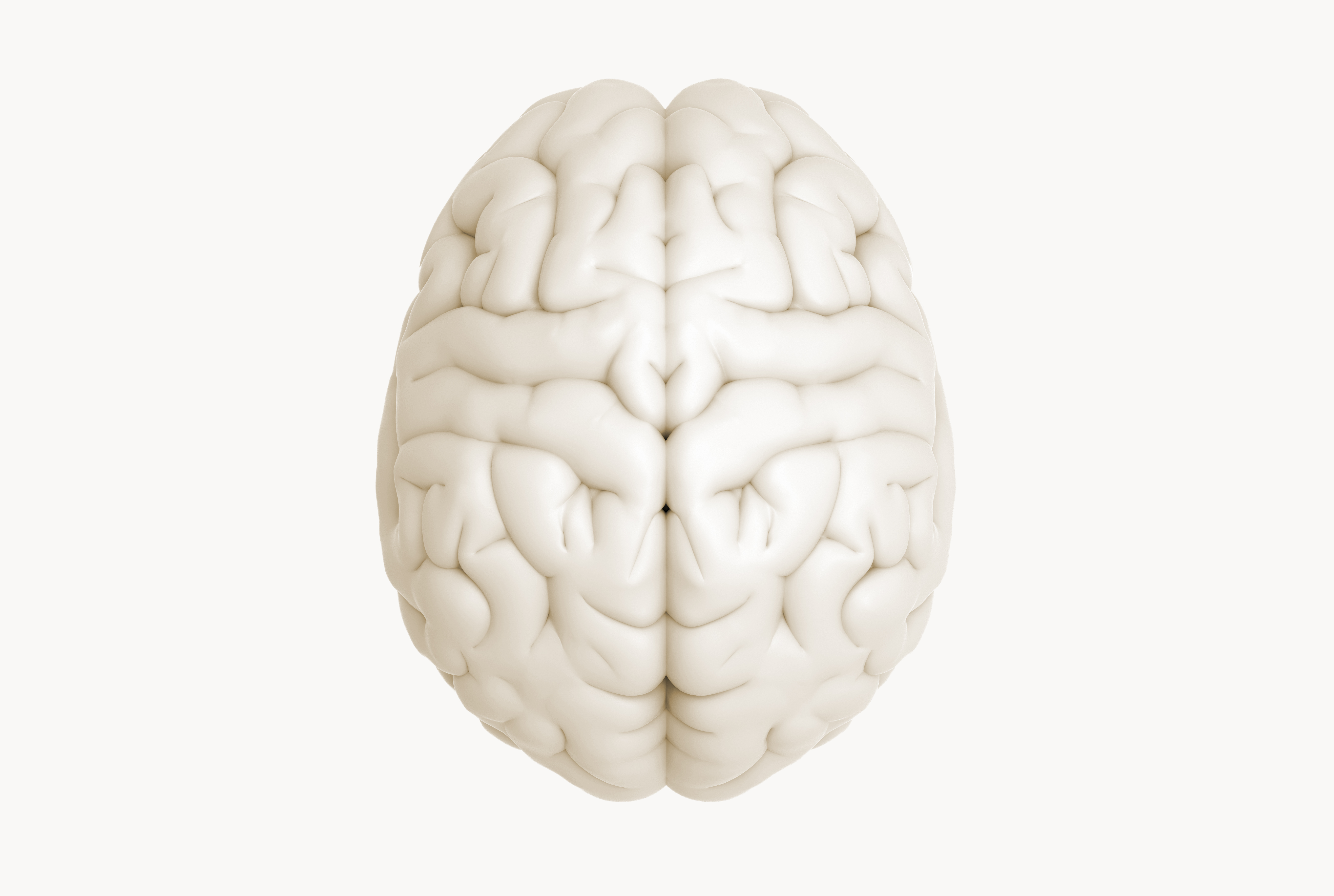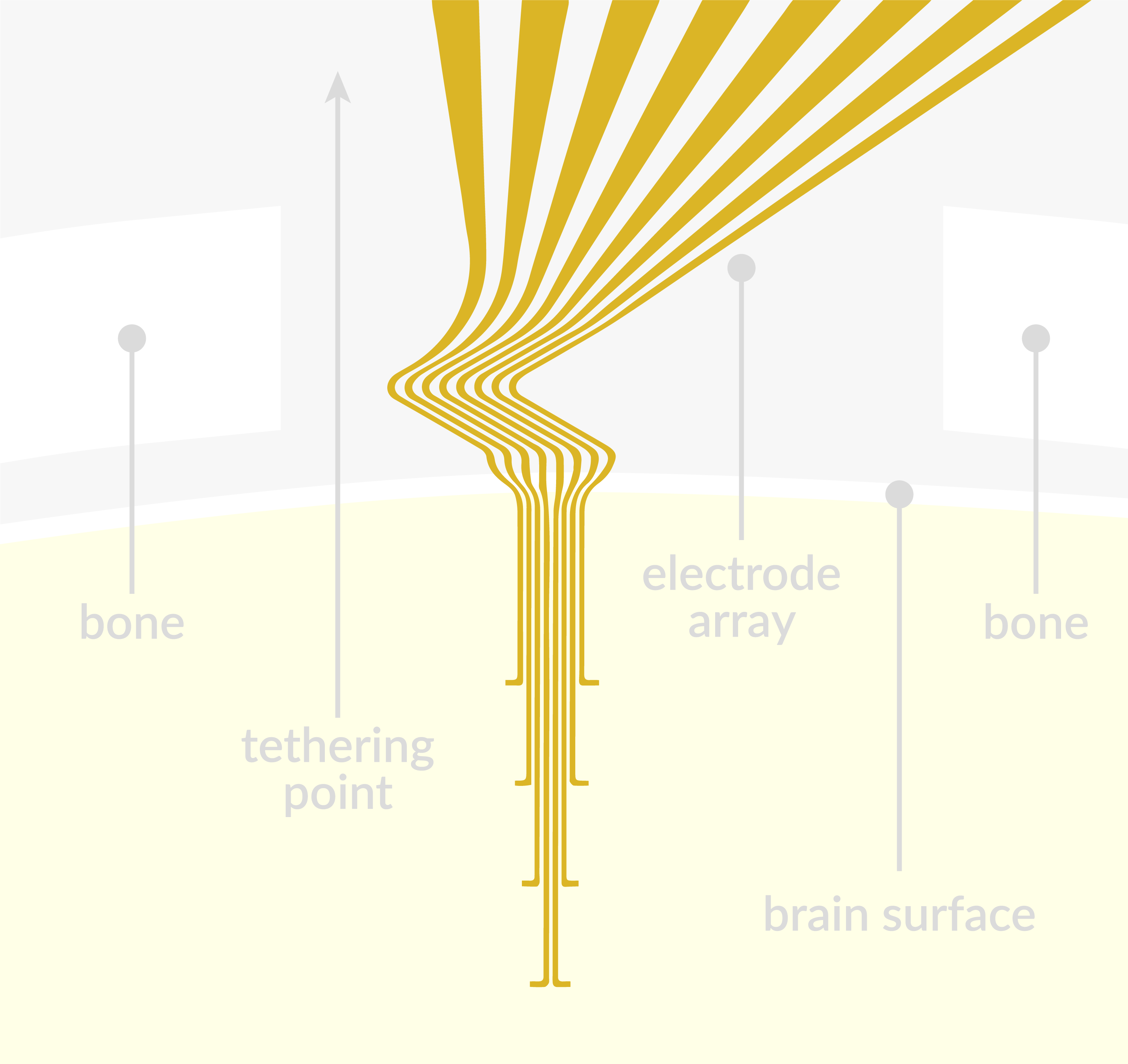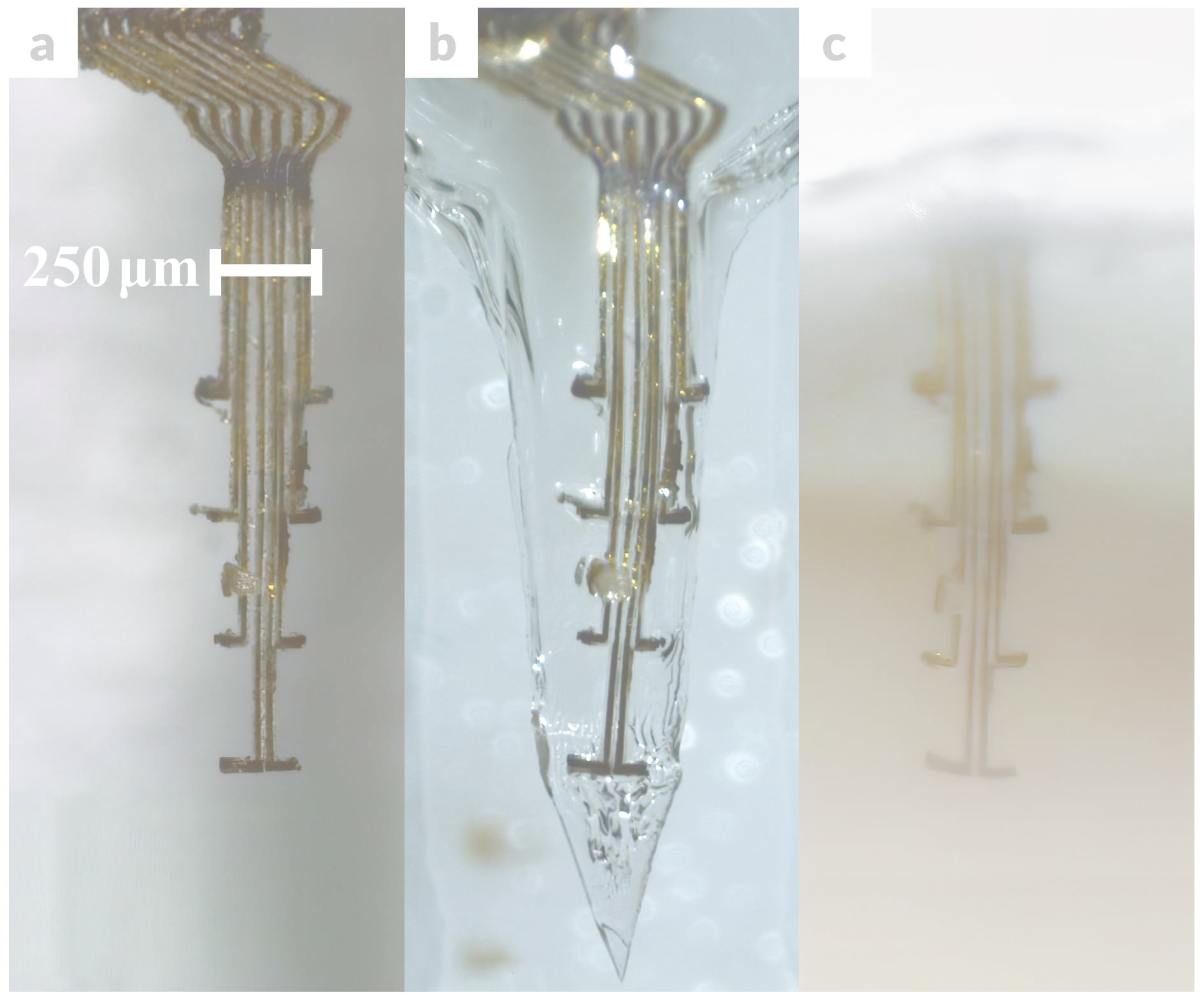stories on progressBreakthrough for flexible electrode implants in the brain
August 1, 2021

image | above
Pictured is a human brain from the top.
— contents —
~ story
~ diagram
~ featurette
~ webpages
— story —
Researchers at Lund University in Sweden have been developed implantable electrodes that can capture signals from a living human (or) animal brain over a long period of time —- but without causing brain tissue damage. This bio-medical tech will make it possible to monitor — and eventually understand — brain function in both healthy + diseased people.
A clever multi-stage design.
Lead researcher Jens Schouenborg PhD said:
There are 2 big problems that must be solved for scientists to be able to record signals from the brain with good results. First, the electrode must be bio-friendly — that means it can’t cause any significant damage to the brain tissue. Second, the electrode must be flexible inside the brain tissue.
Remember that the brain floats in fluid inside the skull —- it moves around when we do any activity: like breathe, walk, or just turn our head. The electrode and the implantation tech that we made have both of these important properties. So our design is highly specialized.
The researchers named their tailored electrodes “3D electrodes.” They’re extremely soft + flexible, so they can make stable recordings of electrical activity in brain tissue over a long time.
Their electrode is so soft that it bends when it touches a watery surface. To implant it, the team developed a technique that encapsulates the electrodes in a hard — but dissolvable — gelatin material, that’s also very gentle on the brain’s delicate tissue.
Looking at the image + video, you can see the tiny strands of electrodes bundled together into a broom-like shape — that’s encased in gelatin. That gelatin is hard enough to implant into the brain’s tissue. Then the gelatin melts-away, leaving the electrode array in-place, intact, without damage.
Team researcher Johan Agorelius said:
This tech retains the electrodes in their original form inside the brain. It can monitor what happens internally without disturbing well-functioning brain tissue.

image | above
A diagram of the super-soft + ultra-flexible electrode implant. Shown installed inside a living brain. The white areas labelled ‘bone’ are the skull.
Other electrodes can’t maintain their shape.
Other flexible electrodes commonly used in medical research can’t maintain their shape when they’re implanted. That’s why the team has been trying to develop a solid chip with limited flexibility. Other types of electrodes are also much stiffer. These older models of electrodes rub against + irritate the brain tissue — and the cells around the electrodes die.
Team researcher Johan Agorelius said:
The brain signals then become misleading or completely non-existent. Our new tech lets us implant the most pliable electrodes — as flexible we want — but still retain the exact shape of the electrode inside the brain.
This tool creates entirely new opportunities to gather data on what happens inside the brain. This kind of knowledge helps us understand + develop treatments for the worst diseases + disabilities like Parkinson’s disease, head trauma, congenital brain deformity, migraine, and the types of brain injuries that lead to motor paralysis.

image | above
The array of electrodes is a bundle of 8 thin gold leads.
guide to the image:
a. | the electrode array before it’s embedded into the gelatin
b. | the same electrode array after it’s embedded into the gelatin + shaped as a needle
c. | the same electrode array inside a section of brain tissue — 3 weeks after implantation
You can see the overall shape of the super-soft + ultra-flexible electrode bundle is well-preserved inside the gelatin — and stays intact even after it’s implanted into a brain.
- the symbol μm means micro-meter
- a micro-meter is also called a micron
- 1 micro-meter — is 1 / 1,000,000 of a meter
- 1 inch — equals 25,400 micro-meters
— featurette —
— webpages —
Lund Univ. | home ~ channel
motto: Prepared for both.
— notes —
3D = 3-dimensional
